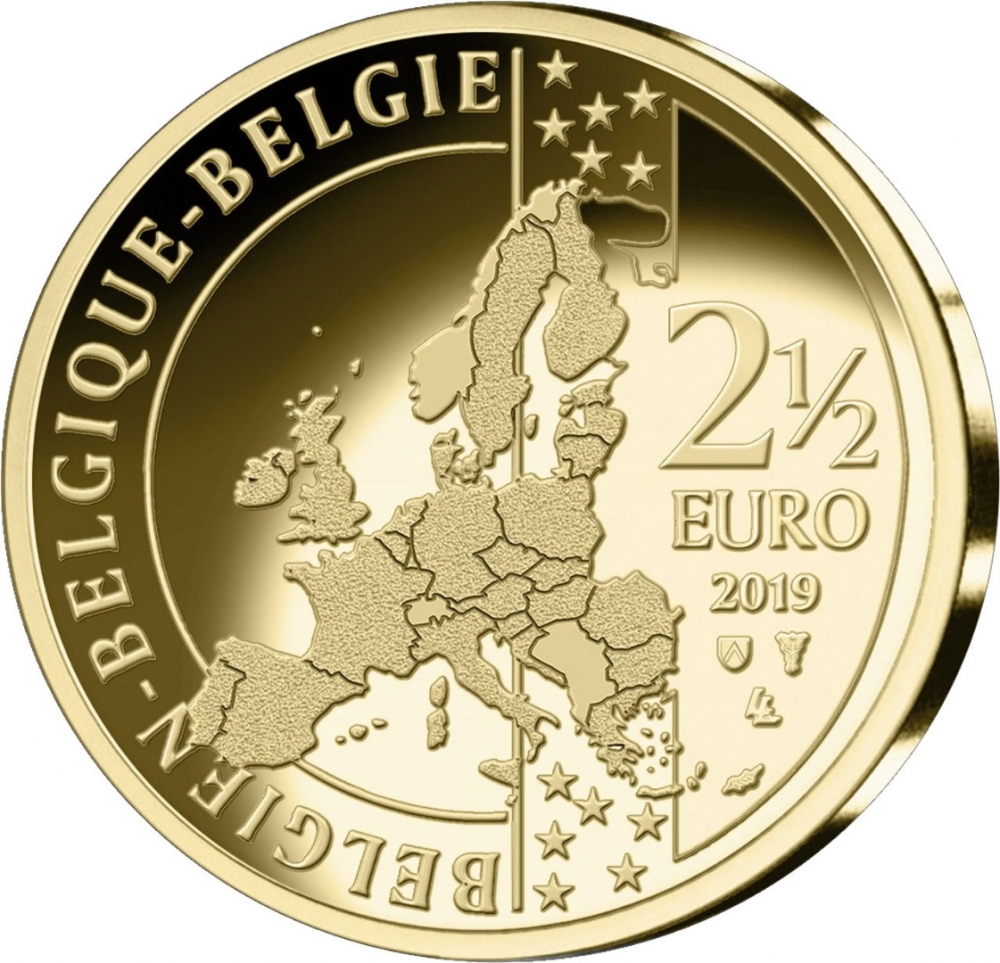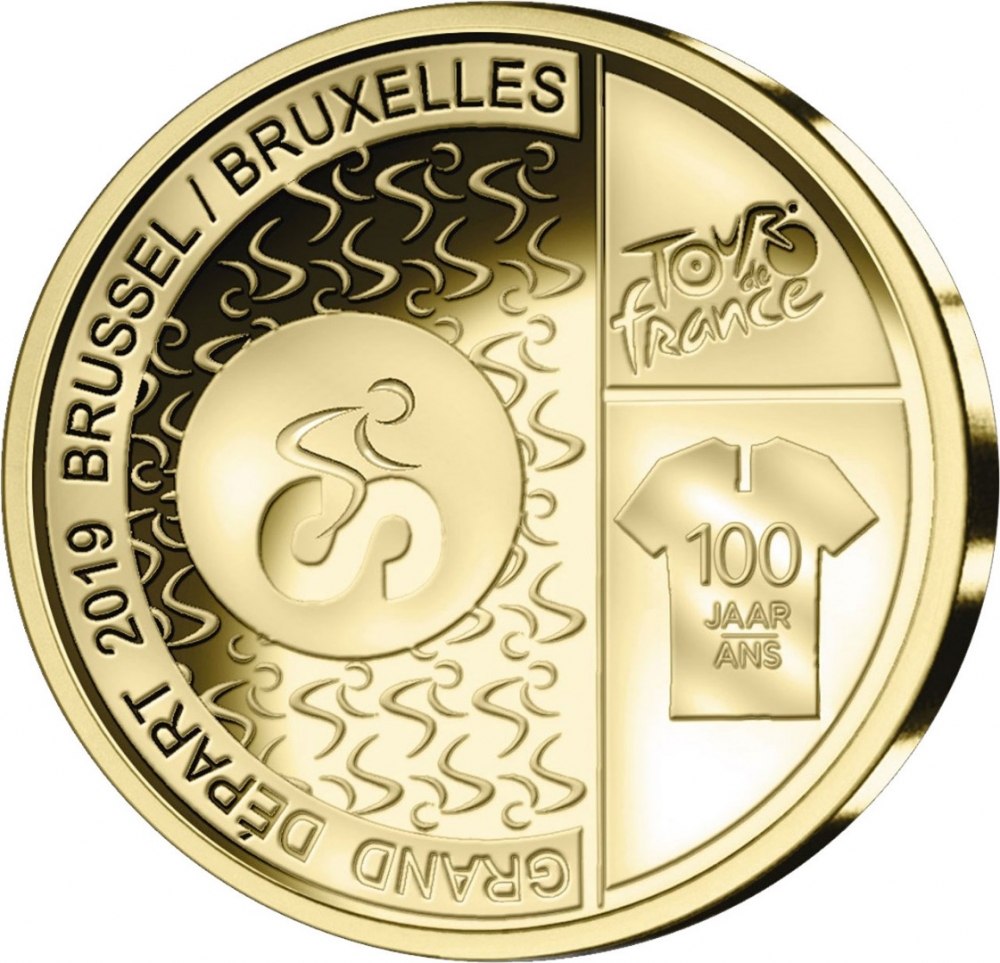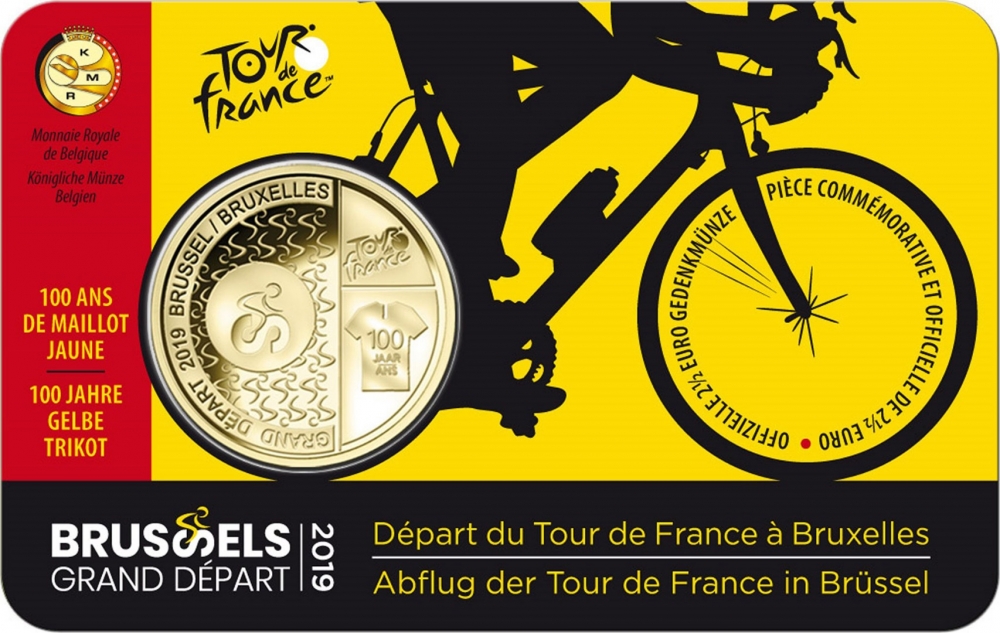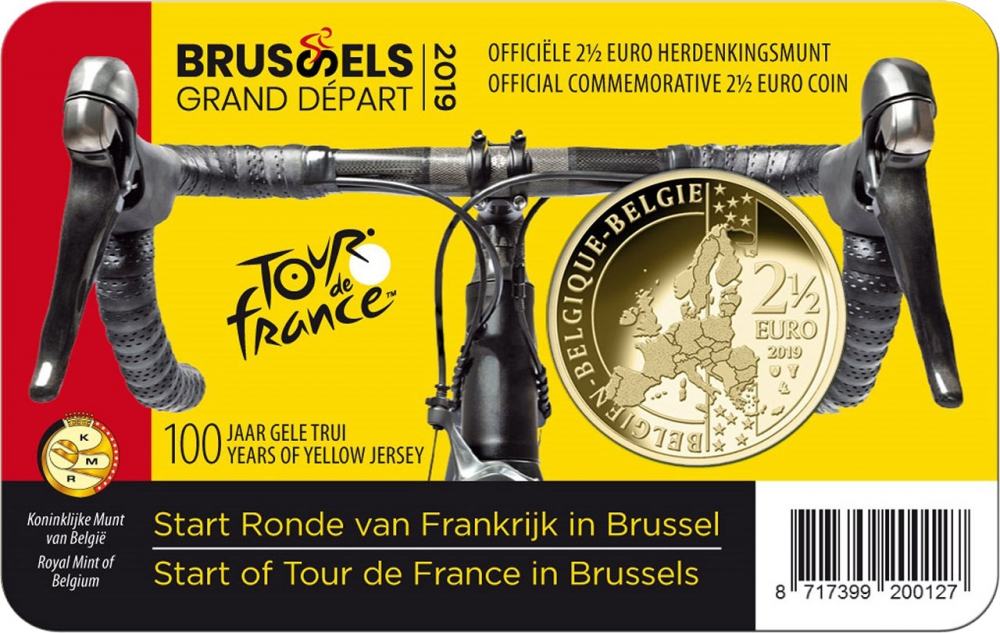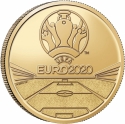You are about to finish your registration. Please check your mailbox (including spam folder). There should be a letter with a confirmation link. Check setting to make sure that your e-mail address is correct.
Send letter againDescription
The Belgian Mint celebrates the 100 days before the start of the 2019 Tour de France in Brussels city. It issues a commemorative coin, specially minted in honour of the “Grand Départ” in Brussels and the 100th anniversary of the yellow jersey. It is presented in a coin card with sporty lines, in BU condition.
The Tour de France is an annual men's multiple stage bicycle race primarily held in France, while also occasionally passing through nearby countries. Like the other Grand Tours (the Giro d'Italia and the Vuelta a España), it consists of 21 day-long stages over the course of 23 days.
The race was first organized in 1903 to increase sales for the newspaper L'Auto. The race has been held annually since its first edition in 1903 except when it was stopped for the two World Wars. Traditionally, the race is held primarily in the month of July. While the route changes each year, the format of the race stays the same with the appearance of time trials, the passage through the mountain chains of the Pyrenees and the Alps, and the finish on the Champs-Élysées in Paris.
Engraver: Luc Luycx
Obverse

|
Depicts a map of Europe surrounded by the country name in three languages on the left and value on the right. BELGIEN-BELGIQUE-BELGIE |
|---|---|
Reverse

|
Depicts the official logo of the Grand Départ in Brussels (left, a cyclist with a bicycle in a form of the letter S) and the Tour de France (top right), as well as the yellow jersey with an inscription "100 Years". GRAND DÉPART BRUSSEL / BRUXELLES |
| Edge |
